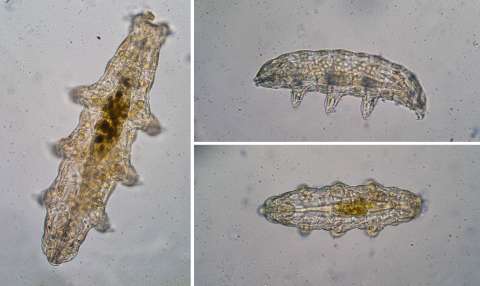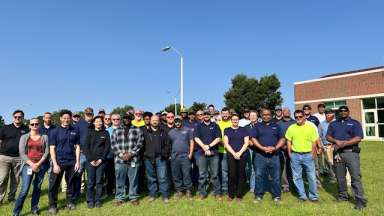It’s a small world after all—at least in the wastewater treatment realm. And we mean microscopic. But before we zoom in, let’s zoom out.
To achieve the clean water that gets released back into our local lakes and rivers, it first has to go through an intricate cleaning process. While Raleigh Water employees are hard at work, they get some help from teeny-tiny... microscopic organisms.
Wait... bugs?
OK, the bugs aren’t spiders, caterpillars or bumblebees. These microorganisms—mainly bacteria and protozoa— which are present during the cleaning process and help break down organic matter and pollutants in the water. A wastewater treatment plant just so happens to be rich in nutrients, making it the perfect home for them.
Here’s one way to look at it: Raleigh Water’s wastewater treatment plants run 24/7, every day of the year. These tiny unsatiable organisms see the plant as an all-you-can-eat buffet, and they continue to help clean the water by breaking down waste, food particles, oils and more.
What about the bears?
It’s all fun and games—until someone mentions bears. Yes, really! But not the cute, furry brown or black bears you’d find in the woods (if you see those, please run). The bears in wastewater treatment are water bears—a very fitting name.
Here’s a picture to help you visualize… yeah, not so hairy or cuddly, but have similar claws like nails – hence the name.

These creatures are known as tardigrades, more commonly known as water bears. They’re famous for being able to survive in all kinds of extreme environments around the world. Water bears are super small measuring about 0.04 inch. They stand out from other microbes because they don’t do a lot of the cleaning work themselves. Instead, their presence is the goal.
When water bears are found in the treatment process, it shows that there are high oxygen levels and effective breakdown of organic matter—both signs that the cleaning process is working well.
Wastewater treatment operations can be complex, and this is just one brief glimpse into the amazing microscopic world that helps keep Raleigh Water clean and safe. So the next time you turn on your tap or flush the toilet, remember: it’s not just technology at work—it’s biology too.

